She smiled.
The greasy little bastard had it coming.
It was too bad. He would have shared in the glory to come, and the money, had he remained true to his loyalties, which at first had been her, and then later, TRIBULATION. Betraying one had betrayed both. That was something she couldn’t abide. Dylan needed to be dealt with. She made a phone call. It wasn’t emotional. It wasn’t personal. It was only the simple computational instruction every programmer learned on day one; the most basic of all control flow statements: if, then.
This was the most rational and primary means by which the decision to execute a code could be made.
Code, or people.
It was simple, pure, binary.
If a certain condition was true (guilt), then the prescribed course of action was taken. If a certain condition were not true (innocence), then the prescribed course of action was not taken.
Dylan actually executed himself. He chose his condition when he betrayed TRIBULATION—or attempted to—and thus his execution was inevitable.
Cause and effect. Linear and inexorable.
But Parsons knew quantum mechanics stood outside of linearity because it was non-localized in either time or space. Israeli scientists had proven that in 2013 when they swapped an entangled pair of temporally separated photons—one future, one past—and detected the polarization of the future photon before the past one was even created.
Effect, then cause.
Dylan had executed himself the day he decided to betray her.
She rubbed her eyes and stretched to push away the failed musings of her amateur philosophizing. It had been a long damn day and the FBI grilling hadn’t improved her mood. She knew she’d passed their oral examination with a decent grade.
The only thing that disturbed her was the idea that Dylan’s death had been made known so quickly. His true identity was as invisible as a quark to almost everyone on the planet, thanks to the DOE’s identity-scrubbing program. How he’d been identified so quickly in Spain was troublesome, but not worth her attention at the moment. Security wasn’t her department. She’d left that to others. Perhaps that was another reason she felt no guilt over Dylan’s death. There was no blood on her hands, was there?
She saw Matvienko and Yu in deep discussion, heading her way. Her mind snapped into focus. She opened her laptop and pulled up the project management flow chart she’d been using for nearly two years. It looked like an underground metro map in the world’s largest city, with huge decision nodes like metro stops sprawling across a succession of digital pages. Each decision node was connected by intricate track lines of responsibilities, timelines, and sub-decision points. More than ninety-eight percent of the chart had been executed and displayed in red. But it was these last few precious stops that led toward the final destination they needed to check off tonight. Judging by the smiles on both men’s faces as they stepped into the conference room, those last decision nodes were about to turn red.
Hallelujah, as her mother used to say.
There was, however, one pubic hair in the organic hummus. Her stomach suddenly sank as if she were falling off a rooftop.
Could these two men be trusted?
Could anyone on this project be trusted?
Dylan Runtso’s betrayal had nearly killed everything she’d worked her whole life to achieve. TRIBULATION would change the world forever. Dylan’s treason was a stunningly selfish act, a betrayal of science itself. She’d thought he was as committed to the project’s success as she was if only because he was as committed to the science as she had always been. Perhaps that was the reason why his betrayal was the “black swan” event she hadn’t predicted or prepared for.
What had suddenly frightened her was the obvious and secondary question. Didn’t swans usually travel in flocks?
52
SOUTH CHINA SEA
The Vietnam People’s Navy patrol boat cut two of its three diesel engines a hundred meters out, and reduced the third to slow ahead as the skilled helmsman maneuvered it toward the Don Pedro , Guzmán’s fishing trawler.
Guzmán was surprised it had taken this long to be pulled over and inspected by one of the national services. He’d passed through the waters of four countries in the last two weeks, mostly to take on supplies, gather intelligence, and reinforce the “legend” that his purse seiner ship was, indeed, a working fishing vessel. It was. At least, in part.
The Don Pedro ’s actual captain was a stoic, barrel-chested sailor named Järphammar with twenty years’ service in Baltic waters as an officer in the Swedish Royal Navy. Järphammar showed little concern when he was first hailed by the Vietnamese vessel, speaking in English to them through teeth clenched around his perpetually lit meerschaum pipe.
After requesting and confirming the Don Pedro ’s identity from its AIS signal, the Vietnamese captain, Lieutenant Commander Phan, ordered the trawler to stop engines and prepare to be boarded for inspection.
Järphammar complied, readily.
The Vietnamese patrol boat was a familiar Russian design that the sturdy Swede had encountered before during his time of military service. Technically, it was half a meter shorter than the Don Pedro, but more than made up for its lack of stature with, among other armaments, a forward-mounted AK-630, a six-barreled 30mm rotary cannon similar to an American M61 Vulcan. Expending upward of five thousand rounds per minute, the AK-630 could shred the Don Pedro ’s thin steel plating in a matter of seconds. Compliance was both logical and inevitable.
“We look forward to your visit, Commander,” Järphammar replied.
We do, indeed.
—
The Don Pedro was fishing in international waters currently undisputed between China and Phan’s own country, but close to it.
Too close, the Vietnamese captain thought.
The Chinese had been aggressively and illegally overfishing traditional Vietnamese waters for the last five years. Worse, the Chinese Maritime Militia (CMM) had become an active and effective arm of the PLA Navy. Drawing on China’s huge private fishing fleet, the PLAN had recruited nearly two hundred thousand civilian fishing vessels. PLAN variously supplied them with advanced electronic equipment, weapons, and training to carry out asymmetrical naval warfare duties. These fishermen-soldiers not only illegally fished Vietnamese waters, but harassed other nations’ fishing and naval vessels. They also hauled ammunition, weapons, and personnel to various PLAN outposts. And they supported the development of the “artificial islands” now permanent and prevalent throughout the South China Sea.
The Vietnamese People’s Navy, like every other regional navy, had become alarmed by the CMM’s activities. It was originally feared that the Don Pedro was one of these vessels in disguise. Phan was ordered to check it out.
From his bridge, Phan scanned the deck of the Don Pedro with his binoculars as his patrol boat approached. The blue-and-white civilian vessel appeared to be a working boat, with cranes and masts to support deepwater commercial fishing. The men on deck were either working or cleaning equipment. They all appeared to be men of fighting age and, it seemed, in good shape, which most deepwater sailors had to be. It was strenuous and dangerous work.
None of them appeared to be Chinese. An interesting mix of Europeans, Hispanics, and, he presumed, a few Africans.
“Oh,” Phan said aloud as his binoculars swept over the front deck. He nudged the naval infantry sergeant standing next to him and handed him the binoculars.
Читать дальше
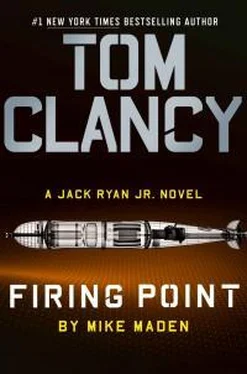
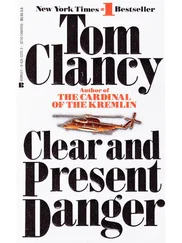

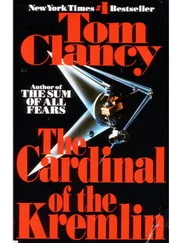

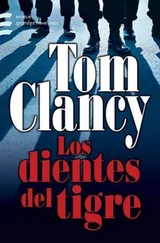
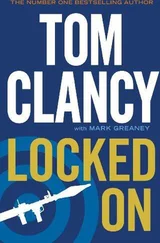
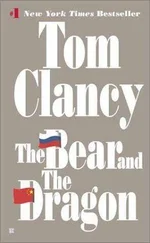



![Александр Ирвин - Tom Clancy’s The Division 2. Фальшивый рассвет [litres]](/books/417744/aleksandr-irvin-tom-clancy-s-the-division-2-falsh-thumb.webp)